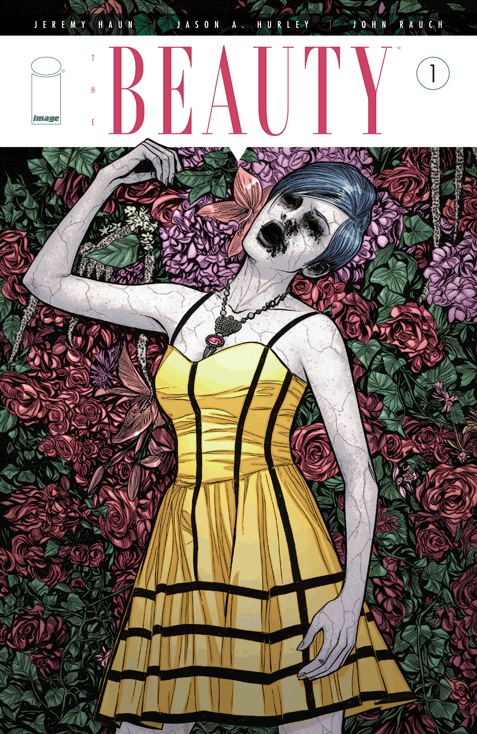With great beauty comes great responsibility, and that responsibility is apparently spreading an epidemic that makes other people beautiful. In Jeremy Haun and Jason A. Hurley's "The Beauty" #1, half of the country has contracted this aptly named sexually transmitted disease over a period of two years, and its primary symptom makes it one that many actually want to catch. It's an idea that seems a little too convenient at first blush but, as the creators unroll the story and explain the nature of this so-called disease, they create a somewhat disturbing and evolving social order and raise a number of possible questions that not only sell their idea but also add tremendous substance to it.
For over fifty years, comic fans have been all-too-willing to believe that a nerdy teenage kid can get superpowers from a radioactive spider bite. Haun and Hurley trust their readership to make the same kind of leap here, asking them to accept that one can achieve the looks of a supermodel by engaging in sex with an STD-infected partner. Appearing to expect that some might have trouble swallowing this idea, the writers kick off the issue not with its central characters, but instead with a narrative that explains the onset of the Beauty as well as the current status quo surrounding it. It's a pretty simple and straightforward explanation and plainly illustrated via a series of panels in urban settings that imply that this disease has spread far and wide. For anyone not buying into it, the writers waste little time and also reveal one of the disease's decidedly negative -- but apparently rare -- side-effects.
Throughout, Haun's art is attractive in its simplicity, sticking with traditional panel layouts and visual perspectives. Only in a comic such as this, though, could that attractiveness serve as a detriment to the story, which somewhat relies on having an understanding of who has contracted this disease and who hasn't. Some characters are apparently supposed to be less than attractive, but that just doesn't come out in Haun's art; all of his characters are well-rendered, but his art is just too pleasant to make any of them all that ugly looking. John Rauch takes a similar approach with the coloring; it's non-descript but makes for a pleasing complement to Haun's lines.
The new world social structure (and implied commentary thereof) is the compelling point of Haun and Hurley's story; whatever perceived inequality between those considered attractive and those who are not is openly brought to the surface here. The stereotype that ugly people never have sex is essentially a reality within this story's landscape, and the violence against so-called beauties -- mentioned but as yet unseen -- could logically be rooted in jealousy, moral objection, class warfare or any combination thereof. The creators barely have a chance to explore this upheaval, but the promise of such a storyline is enough to sell readers on subsequent issues.
Of course, it's also possible that those unlucky enough to become victims simply wear protection, just like mother told them to. Even this lone notion is enough to inspire more thought on the topic, which begs for even more explanation. In a world where, for the first time in history, people actively and eagerly expose themselves to illness, there remain the topics of other epidemics, unwanted pregnancies and just how far some might go to be accepted. There's also the hint of a new social order plainly divided along lines of physical appearance, as well as other unmentioned ideas, like how such a disease can be stopped, when many don't want it to be.
"The Beauty" #1 is one of the strongest introductions to a series in a long time because of all of the fascinating potential it brings and, in keeping with its theme, it's pretty nice to look at, too. Haun and Hurley have laid out a huge canvas, and there are almost limitless ideas they can put down on it. Like the basic human urge that's at the focal point of this comic, "The Beauty" is a pleasurable experience that fans will want to come back and enjoy again.

